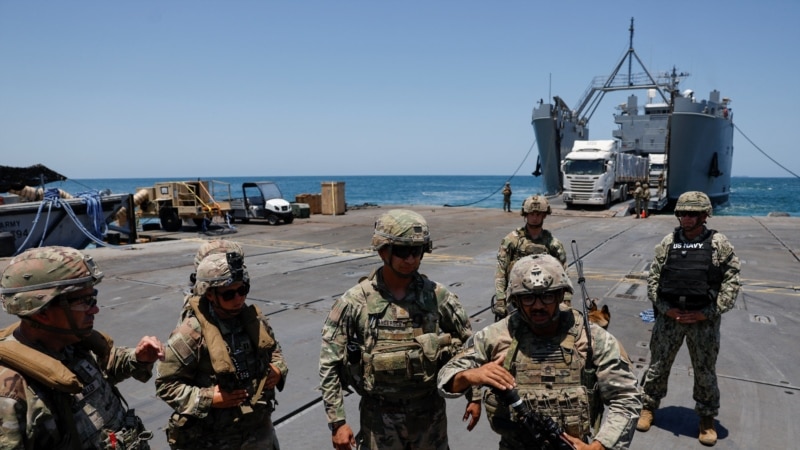
The U.S. military is dismantling the temporary pier it built to deliver aid to Palestinians in Gaza via the sea but will continue to help transfer aid for Gaza from Cyprus to the Israeli port of Ashdod, U.S. officials said Wednesday.
“The maritime surge mission involving the pier is complete, so there’s no more need to use the pier,” Vice Admiral Brad Cooper, deputy commander for U.S. Central Command, told reporters on Wednesday.
At least 5 million pounds of aid remains in Cyprus, according to Cooper, which the U.S. military will help transfer to Ashdod, about 40 kilometers south of Tel Aviv. The U.S. plans to use the same vessels that have transported aid from Cypress to the temporary pier to transport aid from Cypress to Ashdod.
Through coordination with the U.S. World Food Program, that aid will be loaded onto trucks to enter Gaza through a northern entry point, he added.
The temporary pier, known as Joint Logistics Over-the-Shore (JLOTS), delivered 8.7 million kilograms (19.4 million pounds) of aid to Gaza in the 20 or so days it was operational, which Cooper said was a “historically unprecedented operation to deliver aid into an active combat zone without any U.S. boots on the ground.”
“It’s the highest volume of humanitarian assistance that the U.S. military has ever delivered into the Middle East,” Cooper said.
U.S. and partner airdrops have delivered 1.08 million kilograms (2.4 million pounds) of aid into Gaza since the war began, while trucks have delivered 15 million kilograms (33.5 million pounds) of aid through land routes.
The Pentagon had planned to re-anchor the temporary pier to the Gaza shore one last time after detaching it late last month because of rough seas, but weather conditions kept the pier in Ashdod, according to officials.
Last week, U.S. President Joe Biden said he was “disappointed” the temporary pier he ordered be established off the coast of Gaza had not met his expectations.
“I was hopeful that would be more successful,” he said.
Cooper said the aid mission for Gaza would end up costing less than the $230 million initially estimated for the mission. He did not provide a specific number. He added that the Gaza aid mission was more cost-efficient than previous U.S. military aid missions of comparable size. For example, the U.S. aid delivery mission to Haiti following an earthquake in 2010 cost about $460 million to deliver 10 million kilometers (23 million pounds) of aid.
U.S. Senator Roger Wicker, the highest-ranking Republican on the U.S. Senate Armed Services Committee, said Wednesday the pier project had caused “national embarrassment.”
“The only miracle is that this doomed-from-the-start operation did not cost any American lives,” he said. “We cannot buy back the $230 million needlessly spent, and significant questions remain about the Biden administration’s poor planning for this mission.”
Wicker said transporting the pier took “roughly double” the amount of time it was actually in use.
The pier was moved to the Israeli port on June 28 to protect it from weather damage. At the time, officials said there was a chance it would not be reattached.
The pier allowed for aid to enter Gaza via a sea route from Cyprus, a delivery method that officials deemed a “temporary” fix as land routes to get aid into Gaza stalled with long backups of vehicles at Israeli inspection points.
The arrangement was part of an effort to boost what humanitarian organizations say is a vastly insufficient amount of aid for Palestinian civilians.
“We know that there is an urgent need for humanitarian assistance,” Pentagon press secretary Major General Pat Ryder told reporters Tuesday at the Pentagon in response to a question from VOA.
Fighting between Israeli forces and Hamas, a U.S.-designated terror group, had prevented the aid from leaving the Gaza beach and making it to civilians in need during some of the pier’s deployment.
The late-June pier detachment was not the first time the temporary pier was taken offline because of rough seas.
Following its completion in mid-May, the pier operated for just a few days before it was damaged by stormy weather in late May. That damage stopped operations until June 8.
